![]()
|
Index | Pottery | Pottery manufacturers | Thomas G. Booth
|
| [Thomas
Booth & Co] 1868-72 |
[Thomas
Booth & Son] 1872-76 |
[Thomas G
Booth] 1876-83 |
[TG & F
Booth] 1883-91 |
[Booths
Ltd] 1891-1948 |
[Booths
& Colclough] 1848-54 |
[Ridgway
Potteries] 1955-72 |
Location and period of operation:
|
Thomas Gimbert Booth |
Tunstall |
1876 |
1883 |
|
Earthenware and ironstone manufacturer at the Church (Bank) works in the High Street, Tunstall, Stoke-on-Trent, England
|
Formerly Thomas Booth & Son
Subsequently T. G. & F. Booth
Thomas Gimbert Booth
Tunstall, StaffordshireThe Pottery Gazette, 1st July 1880
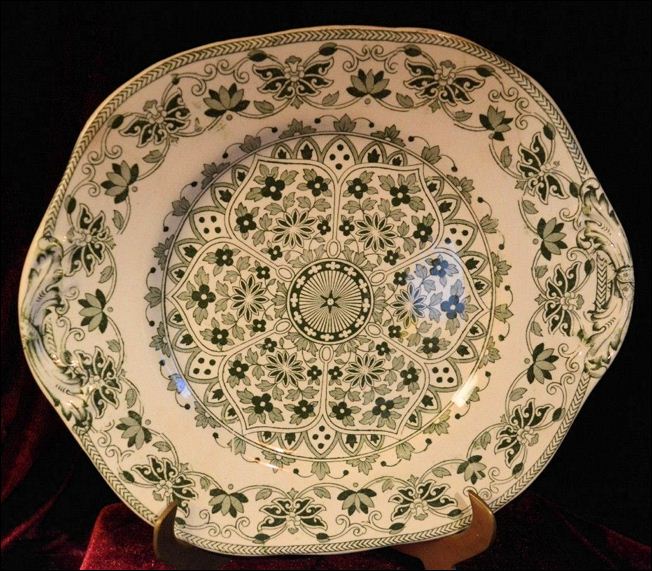
green transferware plate in the Indian Ornament pattern
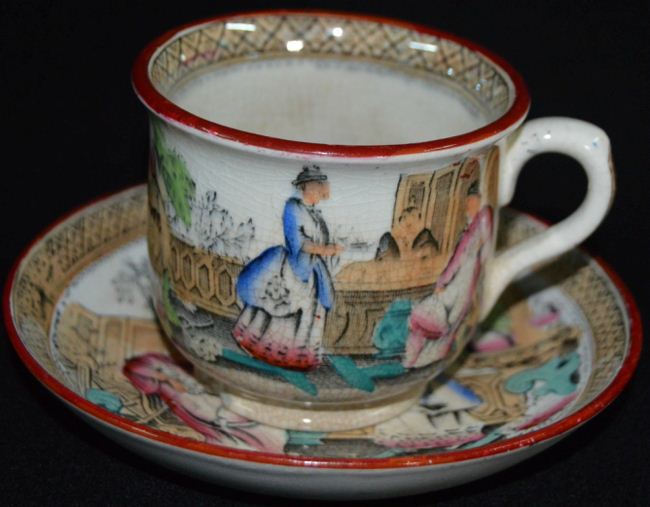
Cup and saucer in the JAPAN pattern
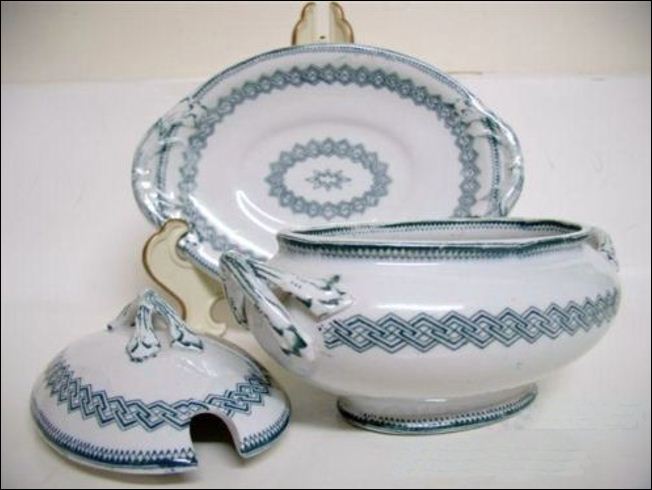
tureen, lid and base in the CHAIN pattern
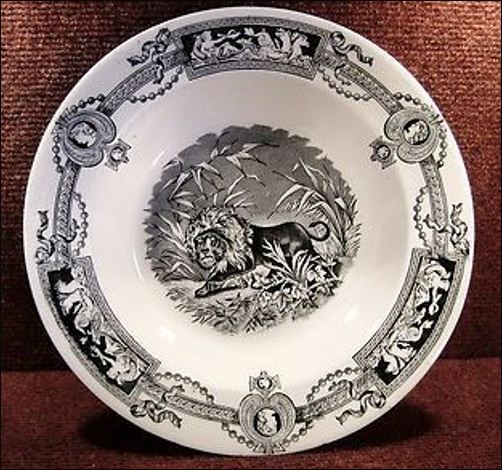 bowl in the popular MADRAS pattern |
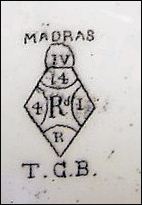 T. G. B. the registration
diamond shows that the pattern was first
registered on |
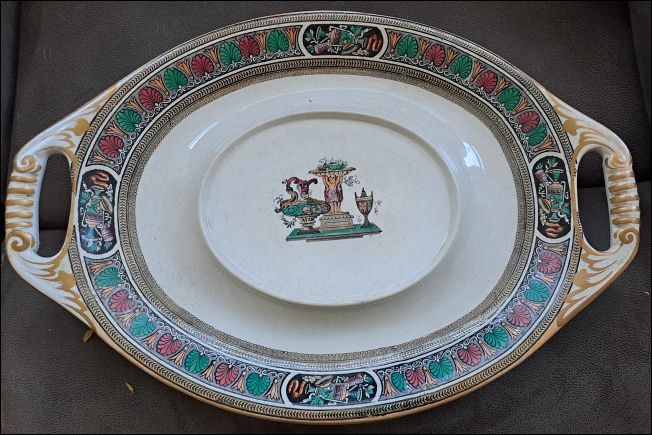
serving platter in the popular VASE patternthe pattern was first registered on the 14th September 1868
by Thomas Booth & Co - subsequent Booth companies also made this pattern
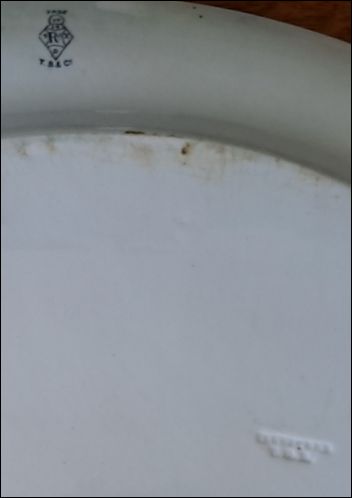
this VASE pattern platter carries two marks - one printed and one impressed |
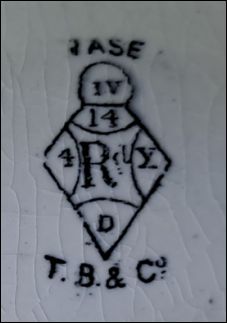 VASE T. B. & Co. the registration
diamond shows that the pattern was first
registered on
the impressed mark shows that the platter was actually made by Thomas Gimbert Booth |
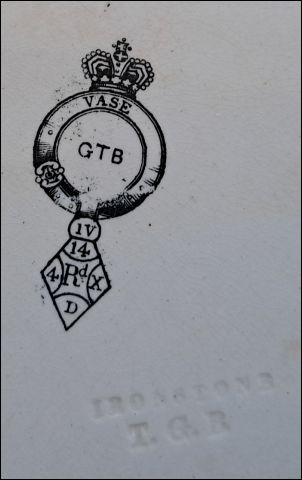 |
another platter in the VASE patter carries both a printed and an impressed mark for Thomas Gimbert Booth. However printed mark has a typo - in the belt mark are the initials GTB - which should read T.G.B. As costs had to be carefully controlled in a very competitive market these printed transfer marks were used, rather than throw them away. |
photos courtesy: Tracy Hurst
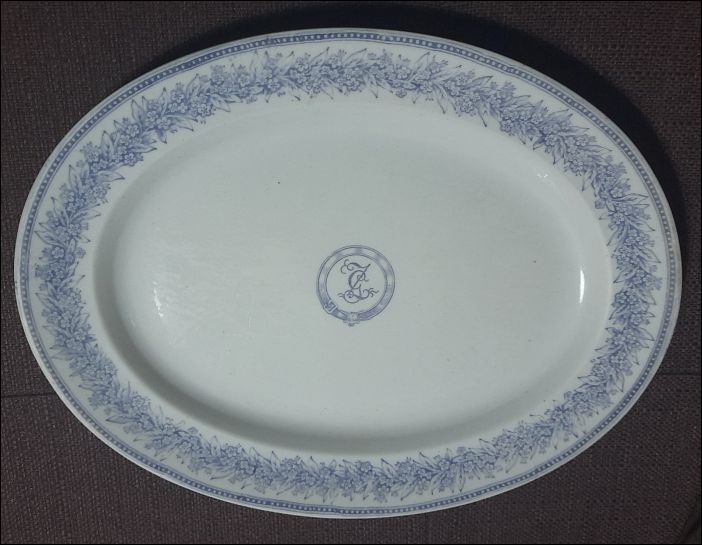 monogrammed platter in the Victoria Wreath pattern |
(printed belt mark)
(impressed mark) although the printed mark has the initials of Thomas Booth & Son (the predecessor company) the impressed mark shows that the platter was actually made by Thomas Gimbert Booth |
photos courtesy: Maren Möller
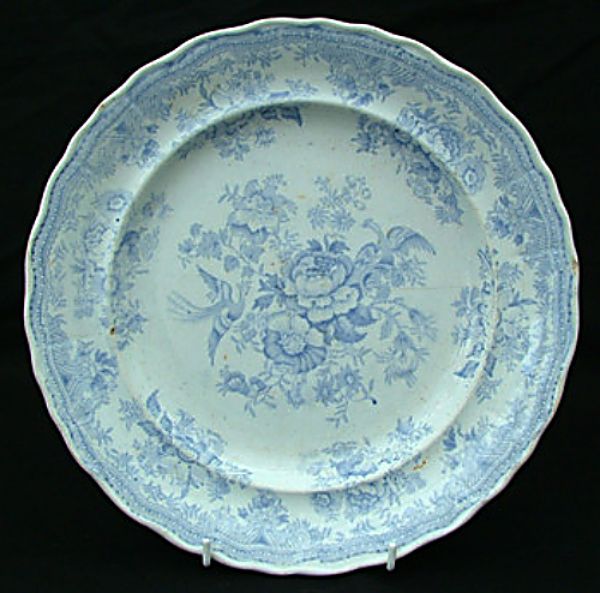 plate in the Asiatic Pheasants pattern |
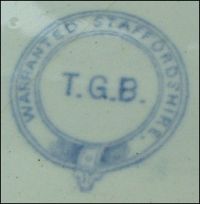 Warranted Staffordshire T. G. B. |
|
Marks & initials used on ware for identification: |
T G B
|
'Indian Ornament' |
'JAPAN' |
|
|
typical printed marks - a belt surmounted by a crown often the pattern name is contained in the belt |
this belt mark on an Asiatic Peasants pattern plate does not have the crown |
|
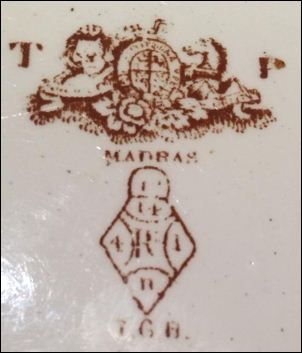
T.G.B
mark incorporating the Royal Arms- the initials TP are probably that of the retailer
'MADRAS' is the pattern name
this and other patterns were produced by previous and subsequent BOOTH companies
the registration
diamond shows
the pattern
was registered on the 14 August 1872
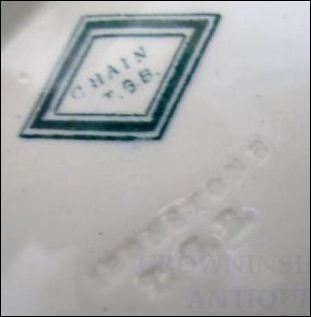
T.G.B
printed
Ironstone
T.G.B
impressed
'CHAIN' is the pattern name
- click the map for more information on the Church Bank Works -
BOOTH, Thomas Gimbert (1850-1907), earthenware manufacturer, Tunstall.Thomas Gimbert Booth, born in June 1850, was the son of Thomas Booth who was a pottery manufacturer, of
Knowles Works, Burslem in 1864 and of Church Bank Works about 1870.Thomas Gimbert Booth succeeded his father about 1876 and for a short time was in partnership with his brother Fred as T G & F Booth.
The business was registered as a limited company about 1898, and Thomas acted as Managing Director until 1904 then as Chairman. The firms produced good quality earthenware and became famous for its Royal Semi Porcelain, Silicon China and in the 20th century for its reproduction, in opaque earthenware, of 18th century Worcester porcelain.
The factory employed 50 Men, 60 Boys, 15 Women, and 30 Girls in 1881. The firm continued until the1940's when it became Booth's and Colcloughs.
Thomas Gimbert Booth was elected to the Tunstall Local Board of Health in 1882 and served as chief
bailiff from 1886-90. He supported the idea of a separate Potteries county and was one of Tunstall's first representatives on Staffordshire county council in 1889. His portrait, by John Nash Peake, hung in the council chamber. He was a churchman, a Conservative and bred racehorses.He lived in Wolstanton, then at Bradwell Lodge, Porthill, at May Bank Cottage in 1881, for some time after 1904 in Wellington, Shropshire and for the last six months of his life at Grace Dieu, 17 Knowsley Road, Southport, where he died on 17 September 1907 leaving a widow, Eliza.
SOURCES: Census 1881, Dir. 1907; Staffs. Sentinel 7 October 1907 (obit.); People of the Potteries; Jewitt.
1881 census:
Dwelling: May Bank Cottage
Census Place: Wolstanton, Staffordshire, England
| Name |
Marr | Age | Sex |
Birthplace | Occupation | |
| Thomas G. BOOTH | M 30 M | Head | Tunstall | Earthenware Manufacturer Employing 50 Men 60 Boys 15 Women 30 Girls |
| Eliza BOOTH | M 31 F | Wife | Liverpool | |
| Lizzie BURGESS | U 18 F | Cousin | Burslem | |
| Sarah GLOVER | U 35 F | Serv | Burslem | |
| Emiley BURGESS | U 19 F | Cousin | Norbury, Shropshire |
Questions, comments, contributions: email: Steve Birks